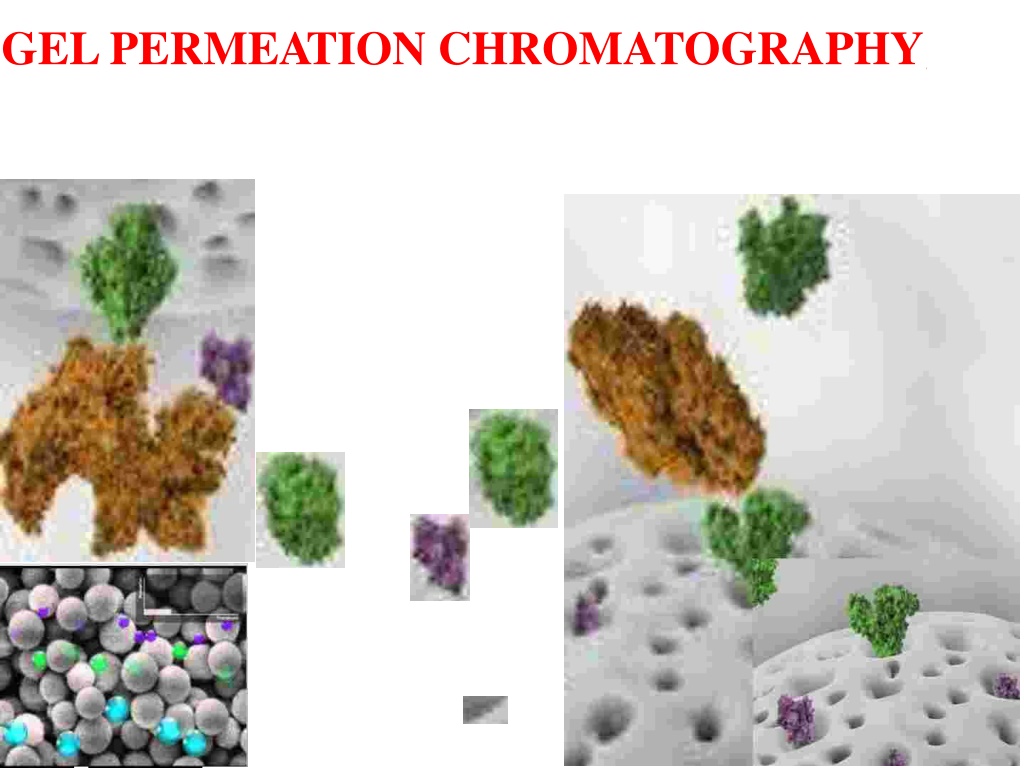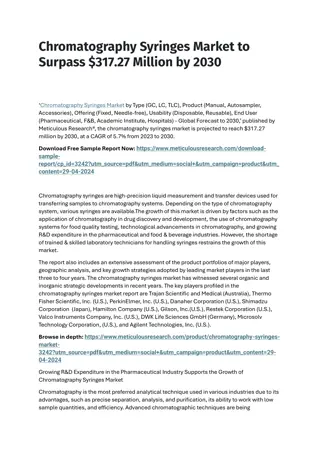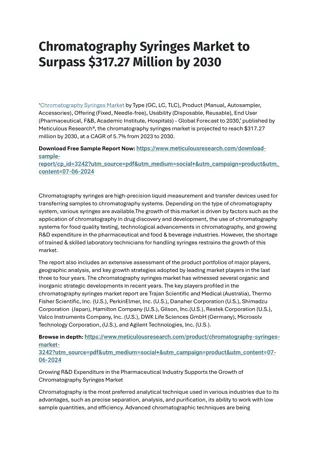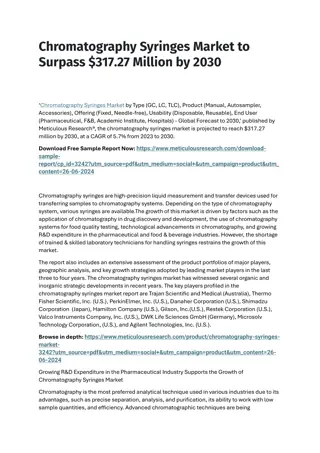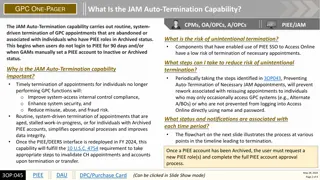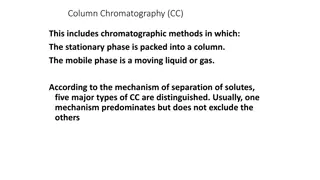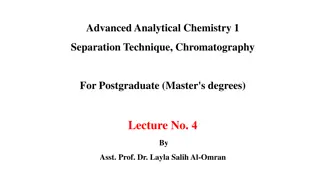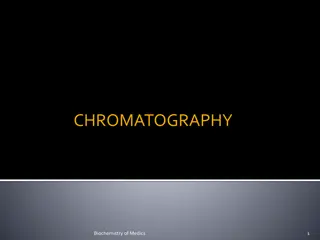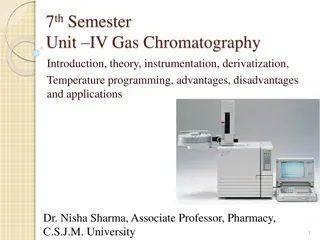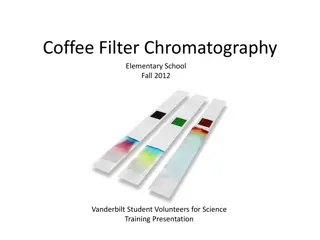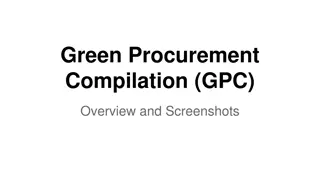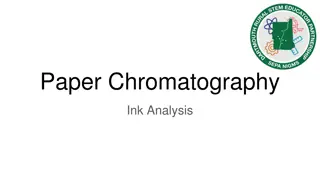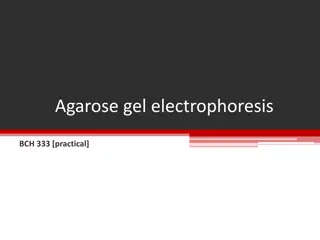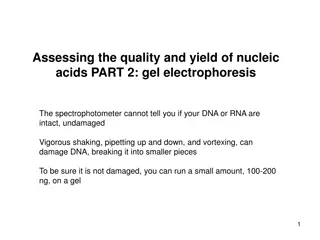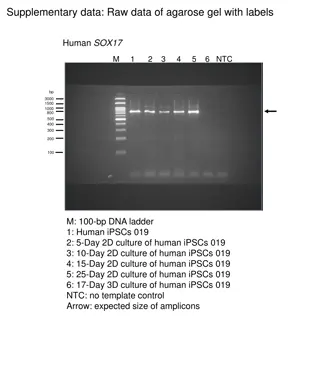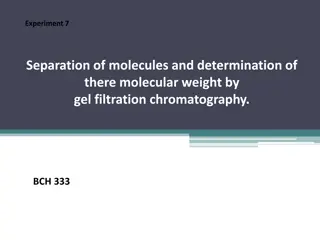Understanding Gel Permeation Chromatography (GPC) Technique
Gel Permeation Chromatography is a technique used for separating components based on molecular weight or size. It utilizes columns packed with a porous material to separate molecules by size, allowing smaller molecules to penetrate the gel matrix while larger ones pass through unhindered. Learn about the principle, theory, components, and applications of GPC from its historical background to modern usage.
Download Presentation

Please find below an Image/Link to download the presentation.
The content on the website is provided AS IS for your information and personal use only. It may not be sold, licensed, or shared on other websites without obtaining consent from the author. Download presentation by click this link. If you encounter any issues during the download, it is possible that the publisher has removed the file from their server.
E N D
Presentation Transcript
Introduction Principle of separation Theory of separation GPC components Experimental setup Separation procedure Advantages and disadvantages Applications
Introduction Gel permeation chromatography Gel chromatography Size exclusion chromatography Gel filtration Molecular-sieve chromatography Definition: Technique : separation of components based on the difference in molecular weight or size, and is one of the effective methods used to isolate and analyze the bio- macromolecular substances.
Brief background Literature 1951-1955 the SEC concept was first recognised but was not clearly formulated 1963- Jim Waters build the first commercial GPC equipment based on John Moore s design 1979-Y au, Kirkland and Bly published the first definitive text on SEC which contributed to the success of SEC and a complete revised edition was publish in 2009. Jim Waters - John C. Moore - Prof. FredV . - Larry E. Maley Model GPC-100 price $12,500
Principle of separation It s a technique that separates dissolved molecules on the basis of their size by pumping these molecules through specialized columns containing a microporous packing material(gel). Stationary phase is a porous polymer matrix whose pores are completely filled with the solvent to be used as the mobile phase. The pore size is highly critical, since the basis of the separation is that molecules above a certain size are totally excluded from the pores, and the interior of the pores is accessible, partly or wholly, to smaller molecules. The flow of mobile phase will cause larger molecules to pass through the column unhindered, without penetrating the gel matrix, whereas smaller molecules will be retarded according to their penetration of the gel.
Theory of separation Acolumn is made up of swollen gel particles and the solvent used to swell the gel in a suitable tubular container. An equation is given below: Vt = V0 + Vi+ Vm where, Vt = the total volume of the column (which can be measured), V0 = the volume of liquid outside the gel matrix (known also void or dead volume), Vi = the volume of liquid inside the matrix, Vm = the volume of the gel matrix
GPC components Stationary Phase The Mobile Phase The Columns The Pump Detectors 1. 2. 3. 4. 5. 1. Stationary phase: Composed of semi-permeable, porous polymer gel beads with well defined range of pore sizes . Properties of gel beads: 1- Chemically inert 2- Mechanically stable 3- Has ideal and homogeneous porous structure (wide pore size give low resolution). 4- Uniform particle and pore size. 5- The pore size of the gel must be carefully controlled. Examples of gel Dextran(Sephadex) gel:An 1-6-polymer of glucose natural gel Agarose gel:A1,3 linked -D-galactose and 1,4 linked 3,6-anhydro- , L-galactose natural gel Acrylamide gel:Apolymerized acrylamide, a synthetic gel
2. The Mobile Phase Composed of a liquid used to dissolve the biomolecules to make the mobile phase permitting high detection response and wet the packing surface. Material Solvent Synthetic elastomers Toluene ( polybutadiene , polyisoprene ) PS, PVC, Styrene-Butadiene Tetrahydrofuran (THF) Rubber , Epoxy resins Polyolefins Tri- chloro -benzene Polyurethane Di- methylformamide (DMF) Proteins, polysaccharides Water / Buffers 3. Columns CommerciallyAvailable Columns include Analytical column- 7.5 8mm diameters. Preparative columns-22 25mm Usual column lengths-25, 30, 50, and 60 cm. Narrow bore columns- 2 3mm diameter have been introduced
4. The pump Are either syringe pumps or reciprocating pumps with a highly constant flow rate. 5. Detectors Concentration sensitive detectors Bulk Property Detectors- Refractive Index (RI) Detector Solute Property Detectors- Ultraviolet (UV)Absorption Detector Evaporative Detectors- Evaporative Light Scattering Detector (ELSD) Molar mass sensitive detectors 1. Light Scattering Detectors LowAngle Light Scattering (LALS) Detectors Multiangle Light Scattering (MALS) detectors 2. Viscosity Detectors- DifferentialViscometers
Separation procedure 1- Preparation of column for gel filtration which involves Swelling of the gel Packing the column Washing:After packing, several column volumes of buffer solution is passed through the column to remove any air bubbles and to test the column homogeneity. 2- Loading the sample onto the column using a syringe 3- Eluting the sample and detection of components
Advantages and disadvantages Advantages: Short analysis time. Well defined separation. Narrow bands and good sensitivity. There is no sample loss. Small amount of mobile phase required. The flow rate can be set. Disadvantages: Limited number of peaks that can be resolved within the short time scale of the GPC run. Filtrations must be performed before using the instrument to prevent dust and other particulates from ruining the columns and interfering with the detectors. The molecular masses of most of the chains will be too close for the GPC separation to show anything more than broad peaks.
Applications of GPC Proteins fractionation Purification Molecular weight determination. Separation of sugar, proteins, peptides, rubbers and others on the basis of their size. This technique can be use to determine the quaternary structure of purified proteins.
